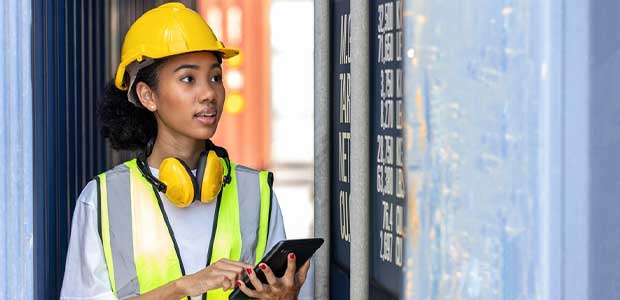
Diving Into Construction Safety, Headfirst
The importance of preventing traumatic brain injury in the construction industry.
- By Steve Madey
- Aug 01, 2022
All companies strive to create a safe workplace environment and reduce risks of injury to their employees. But at the end of the day, accidents happen. As science and technology evolve, conversations around workplace safety and equipment should too. When it comes to the construction industry, head protection should be top of mind for a company and its workers.
Understanding Head Injuries Begins with Understanding Your Head
The human brain is one of the most complicated organs. Your body is designed to protect it and for good reason: your brain is responsible for all your thoughts, feelings and bodily function. It determines how you live and experience the world around you. You only get one brain.
There are three significant natural bodily defenses in place to protect your brain. The cranium, which is a part of your skull and consists of eight different bones that all act as a protective bone layer. Within your cranium are three thin layers of membranes called meninges, its sole purpose is to protect your central nervous system from sudden and severe injury. Then there is the cerebrospinal fluid (CSF), which passes between layers of the meninges and circulates throughout your central nervous system, hollow cavities of your brain (ventricles) and cushions your brain.
The above mechanisms are a glimpse into the protective structures our bodies naturally put in place that allow and protect this essential organ, our brains, to operate every day.
What is Traumatic Brain Injury?
The Centers for Disease Control and Prevention (CDC) have classified traumatic brain injury (TBI) as a silent epidemic. TBI is one of the most serious occupational injuries a worker can sustain, and the number of those who experience it is higher than you may think.
In the United States alone, there are over 5 million men, women and children living with traumatic brain injury and deaths tallying to roughly 176 people each day due to a TBI-related injury. Medical care for TBI can cost from $600,000 to $1.8 million per individual case plus additional costs to companies in terms of productivity.
TBI is a debilitating and lifelong injury that affects how the brain works. Cases can range from mild concussions to severe cases requiring an ongoing care and treatment plan to a worst-case scenario, death.
As an orthopedic surgeon, I have dedicated my life to helping people—fixing their injuries—and while I can fix something like a broken arm, I can’t fix an injured brain. That’s why wearing a hard hat is essential in protecting construction workers as well as other heavy-industry workers to mitigate the risk of head injury.
Construction Workplace Safety
TBI is not a rare occurrence in the construction industry. In fact, construction faces the highest number of occupational TBIs of any industry in the U.S., accounting for 25 percent of all work-related TBIs. Most commonly these incidents occur due to falls, slips or trips as well as falling objects. TBI is caused by rotational forces when your head is hit, which shears the brain inside your skull, resulting in irreversible damage.
Personal protective equipment (PPE) used on construction sites is a requirement set by OSHA for good reason. A hard hat as well as proper footwear, durable gloves and high-visibility clothing articles such as a vest should be worn to help prevent possible injury. Hard hat attachments and accessories have additional benefits with features that protect the wearers’ eyes, ears, nose and mouth.
With extensive technological advancements, a lot more is possible today when it comes to head protection. As an orthopedic surgeon, you encounter a lot of injuries, but you also see a lot of recoveries. However, when it comes to brain injury, there is nothing you can do about it after the fact, so having proper head protection should always be a priority.
Don’t take your hard hat for granted. It should be both top of mind and on top of your head, at all times.
This article originally appeared in the July/August 2022 issue of Occupational Health & Safety.